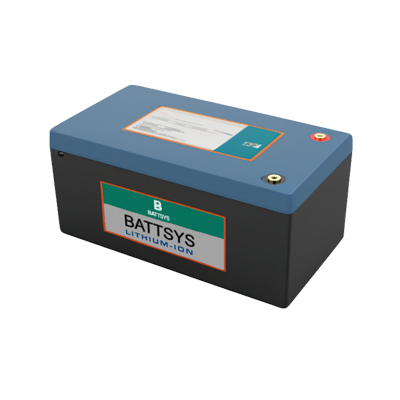How to charge marine lithium batteries.
Check the charging device: Ensure that the instruments on the charging device that indicate charging and discharging current, voltage, temperature, and other parameters are working properly. Check if the charging and discharging protection and visual and auditory alarm functions in the battery management system are normal in case of charging faults.
Connection status check: Check the connection status between the charging connection device (such as charging gun, charging connector, etc.) and the onboard charging equipment (including shore power box) to ensure that the mechanical interlocking function of the charging connection device is normal, and to prevent loose or even detached charging cable interfaces during live plugging and charging processes.

Personal protection: During charging operations, operators should wear personal protective equipment such as insulated gloves and boots in a standardized manner. Before connecting to shore power, it is necessary to confirm that the closing switch of the ship and shore power box is in the disconnected state, and use a measuring device to test the wiring post. The power connection operation can be carried out only when there is no electricity.
Extreme case handling: During charging operation, the crew shall keep on duty. In case of sudden lightning, strong wind, rainstorm, abnormal change of water level and other extreme cases, the charging operation shall be stopped in time and the line connection shall be disconnected to prevent secondary disasters caused by lightning strike, water ingress, abnormal change of ship position, etc. during the charging period.
Using an original charger: To avoid damage to the lithium battery caused by excessive current or unstable voltage, it is recommended to use an original charger for charging. The original charger has undergone strict testing and certification, and can provide stable voltage and appropriate current, helping to maintain the health of lithium batteries.
Control charging current and voltage: When charging lithium batteries, it is generally required that the charging current does not exceed 1C of the battery capacity. The charging voltage should be slightly increased from the standard voltage of 3.7V to around 4.2V to store more electricity. Excessive or insufficient charging voltage can damage the battery.
Constant current charging and constant voltage charging: The charging of lithium batteries is generally divided into two stages: constant current charging and constant voltage charging. Constant current charging refers to charging at a constant current at a lower voltage. When the battery reaches a certain level of charge, constant voltage charging begins, that is, charging at a constant current at a certain voltage. By charging through these two stages, the charging speed of the battery can be better controlled and the stable performance of the battery in a fully charged state can be ensured.
Charging cut-off voltage: In order to protect lithium batteries, the charging cut-off voltage should generally be set at around 4.2V. If it exceeds this voltage, charging should be stopped in a timely manner. Excessive charging cutoff voltage can cause the decomposition of battery electrolyte, while low charging cutoff voltage can lead to insufficient charging of the battery, affecting its actual usage time.
E-Mail: inquiry@fentbattery.com
Tel: 0086 20 3901-1403
Address: No.3, Dongli Road, Xili, Dongyong Town, Nansha District, Guangzhou City, China
Copyright@ China lithium ion battery manufacturers & suppliers & producers | Lithium Battery Factory & Company-BATTSYS Sitemap